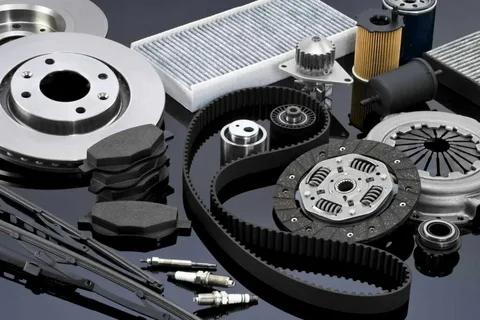In the fast-paced world of the restaurant industry, promotions and discount offers play a pivotal role in attracting new customers and retaining loyal patrons. However, effectively managing these special promotions can be a daunting task for restaurant owners and managers. This is where a Restaurant POS (Point of Sale) system becomes an invaluable tool. A modern POS system streamlines operations, offers detailed insights, and provides the flexibility needed to manage promotions with precision.
In this article, we will explore how a Restaurant POS helps in managing special promotions and discount offers, and the significant impact it can have on overall business success.
1. Automated Application of Discounts
One of the most significant advantages of using a restaurant POS to manage promotions and discount offers is automation. Instead of manually applying discounts, a restaurant POS system allows for automatic implementation of promotions, ensuring consistent and accurate pricing. This automation reduces human error and prevents situations where customers might be overcharged or undercharged. For example, during a “Happy Hour” promotion, the POS can automatically adjust prices for drinks during specific times, making it easier for the staff to focus on customer service rather than constantly checking the clock and adjusting prices manually.
Example
If a restaurant is running a “Buy One Get One Free” (BOGO) promotion on specific items, the POS can be programmed to automatically apply the discount whenever those items are ordered. This eliminates the need for servers or cashiers to manually input the discount, ensuring accuracy and speeding up the checkout process.
2. Customizable Promotion Rules
A restaurant POS system provides restaurant owners and managers with the flexibility to customize promotion rules according to specific business needs. These rules can be set to control how and when promotions are applied, the types of items included, and any additional conditions such as spending minimums or customer eligibility.
Types of Customizable Promotions
- Time-based promotions: Discounts or offers that apply during certain times of the day, such as happy hours, lunch specials, or late-night deals.
- Quantity-based promotions: Discounts given based on the quantity of items ordered, such as “Buy Two Get One Free.”
-
Item-based promotions: Specific items that are offered at discounted prices, such as half-priced appetizers or discounted beverages.
Seasonal promotions: Offers that run during specific seasons or holidays, like “Valentine’s Day Dinner Special” or “Holiday Buffet.” - These customizable options allow restaurants to tailor their promotions to fit their customer base, drive sales during slower periods, or cater to special occasions.
3. Tracking Promotion Performance
Knowing which promotions are most effective is key to a restaurant’s success. A restaurant POS system allows for detailed tracking of promotions, providing valuable data that can be used to measure the performance of different discounts and offers.
Key Metrics Tracked by POS Systems
Sales Volume: A POS system can track how many items were sold during a promotion, allowing management to determine whether the promotion resulted in a significant increase in sales.
Revenue Impact: By comparing sales data before, during, and after a promotion, the system can provide insights into how much additional revenue the promotion generated.
Customer Engagement: Some POS systems have loyalty program integrations that allow management to see how many customers participated in a promotion and how it impacted customer return rates.
Cost Analysis: A POS system helps track how much a promotion costs the restaurant (in terms of discounts given), providing insights into the overall profitability of each offer.
With this information, restaurant managers can make data-driven decisions on whether to continue, adjust, or end a particular promotion. This kind of analysis helps fine-tune marketing strategies and ensures that promotions contribute positively to the bottom line.
4. Managing Loyalty Programs
Many restaurants offer loyalty programs that reward customers with points or discounts after certain purchases. A Restaurant POS system simplifies the process of tracking and managing these programs, ensuring that customers receive the appropriate rewards without confusion or manual intervention from staff. The POS tracks customer purchases and automatically applies discounts or adds loyalty points based on the program’s rules.
Advantages of POS-Integrated Loyalty Programs
Automatic point accrual: POS systems can automatically track purchases and assign points based on predetermined criteria.
Reward redemption: Customers can easily redeem rewards at the POS during checkout, and the system will adjust the total accordingly.
Customer segmentation: A POS system can segment customers into different groups based on purchase history, allowing for targeted promotions and special offers for loyal patrons.
This type of seamless integration improves customer satisfaction and helps build long-term relationships with repeat customers.
5. Mobile POS for Flexible Promotions
A mobile POS system adds another layer of flexibility for restaurants, particularly when it comes to running promotions during events, festivals, or off-site locations. Servers with mobile POS devices can process orders and apply discounts directly at the table or wherever the customer is located, streamlining the dining experience and eliminating the need for centralized checkout stations.
Use Cases for Mobile POS
Food Trucks & Pop-up Events: Restaurants that operate in multiple locations or participate in events like food festivals can run promotions smoothly with a mobile POS system.
Catered Events: Mobile POS units can ensure that discounts and promotions are applied correctly during off-site catered events, where traditional POS systems may not be feasible.
Table-side Promotions: During promotional events, servers can apply offers directly at the table using mobile devices, ensuring immediate and accurate discounts for the customer.
This mobility ensures that no promotional opportunity is missed, even in non-traditional restaurant settings.
6. Upselling and Cross-Selling Opportunities
A modern restaurant POS system can assist in upselling and cross-selling by prompting servers to offer additional items or upgrades when certain promotions are running. For example, if a customer orders an entrée, the system might prompt the server to offer a discounted appetizer or beverage that is part of a current promotion.
Benefits of POS-Assisted Upselling
Increased average check size: Suggestive selling of promotional items can increase the average check size.
Better promotion awareness: Servers are reminded of current promotions, making them more likely to suggest them to customers.
Improved customer experience: Customers feel they are getting more value when they are made aware of special offers or discounts that they may have missed.
By leveraging the built-in capabilities of the POS system, restaurants can maximize the impact of their promotions and boost their bottom line.
7. Real-Time Updates and Control
Restaurants often need to change or adjust their promotions on the fly based on current sales performance, inventory levels, or customer demand. A restaurant POS system allows managers to make real-time updates to promotion settings, ensuring that the staff is always aware of current offers and pricing.
Real-Time Capabilities of POS Systems
Instant price adjustments: Managers can update prices across all registers instantly, ensuring that promotions are applied correctly even during the busiest hours.
Inventory management: When a promotion results in the rapid sale of certain items, the POS can help track inventory levels and alert staff when an item is running low, allowing for quick adjustments to the menu or promotions.
Centralized control: In multi-location restaurants, a cloud-based POS system allows for centralized control over promotions, ensuring consistent application across all branches.
This ability to adapt quickly ensures that promotions are executed smoothly, without delays or confusion, enhancing both customer satisfaction and operational efficiency.
8. Enhanced Customer Experience
A well-managed promotion improves the customer experience, and a restaurant POS system plays a critical role in delivering that experience. When promotions and discounts are applied correctly and seamlessly, customers are more likely to have a positive perception of the restaurant. Long waits or disputes over pricing due to manual errors can lead to frustration, but with a POS system, such issues are minimized.
Moreover, POS systems that support digital payments and integration with online ordering platforms allow for easy redemption of online promotions, enhancing convenience for customers who prefer to order remotely.
Key Customer Experience Enhancements
Faster service: Automation of discounts and promotions reduces wait times and speeds up the checkout process.
Accuracy: Customers are charged the correct amount without needing to double-check prices or request corrections.
Consistency: Whether dining in, ordering online, or getting takeout, promotions are applied consistently across all platforms.
This streamlined experience encourages repeat business and promotes positive word-of-mouth, both of which are crucial for long-term success.
Conclusion
In today’s competitive restaurant environment, promotions and discounts are essential tools for attracting and retaining customers. However, managing these offers manually can be time-consuming and prone to error. A modern Restaurant POS system simplifies the process by automating discount application, providing real-time data on promotion performance, and offering customizable options to suit a restaurant’s unique needs.
By integrating loyalty programs, offering mobile flexibility, enabling upselling, and providing real-time control, a POS system not only helps manage promotions more effectively but also enhances the overall customer experience. As a result, restaurants can optimize their promotional efforts, increase profitability, and build lasting relationships with their customers.
In essence, a Restaurant POS system is a powerful tool that transforms the way special promotions and discount offers are handled, leading to greater operational efficiency, higher revenue, and happier customers.








